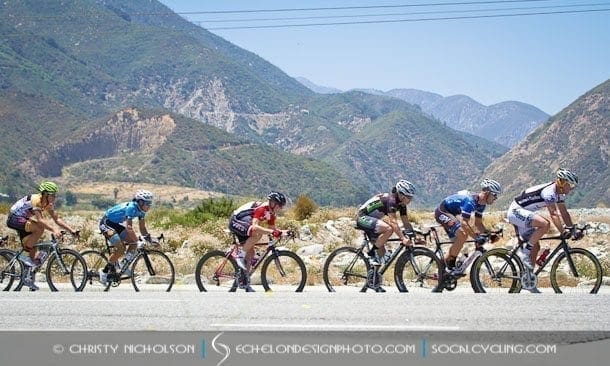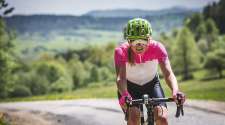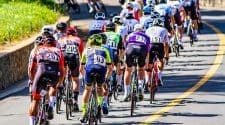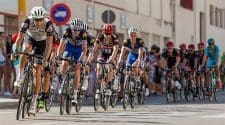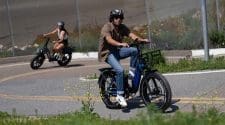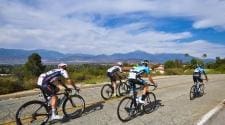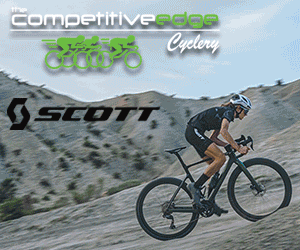IT’S HOT and sticky and you feel like you wanna run naked through a cool sprinkler over and over and over. How do you make sure you are taking all of the precautions possible to achieve peak performance in important races coming up like Elite and Junior National Road Championships and Masters Nationals? What if you want to do well in your next crit, which is only an hour, right? Your core temperature along with the more important, muscle temperature, can overheat and greatly reduce performance in as little as 5 minutes of exposure. WHAT?
Mechanical performance of muscle is greatly influenced by temperature, as are most biological processes. Maximal forces developed by muscles and their rates of force generation, contraction, relaxation and power output are all altered when body temperature varies. Hmmmmm…….
In The Effects of Temperature on Performance by By Lawrence Fine, he states:
“A human being can only tolerate a variation of around 5° F in internal body temperature without physical and mental performance being impaired.”
Did he just say MENTAL performance? Yes he did and as we know, that alone can play an enormous role in how we perform when the temperatures are normal!
Here is a quick and easy explanation on the 4 ways heat is released from Mr. Fine.
Most of the heat is conducted in the blood stream to the skin where it is released into the environment in four different ways:
1. Conduction: excess heat is transferred through direct contact with an object (e.g. when swimming in cold water).
2. Convection: circulating air allows heat to be transferred to air passing over the skin (depends on the air temperature).
3. Radiation: Involves heat being lost from the body through radiation (e.g. loss of heat within a cold environment).
4. Evaporation: excess heat is transferred to sweat which is then evaporated. Sweating is the most important means of dissipating heat when exercising under hot conditions.
What to do? I have written a tip sheet with very effective tips for dealing with the heat and optimizing your performance in the heat:
1. It is paramount that you know if you are someone who loses a lot of sodium during a hot and/or long event. If you cross the finish line looking like a powdered donut but have not yet cramped in a race, you are lucky. Know it’s coming though at some point and take the precautions to counteract cramping. There is nothing you can do to change the fact that you might be someone whose body loses sodium at a rapid rate. Its genetic and you either are or are not that person.
2. If you are going to be in a hot (over 35 degrees C) or long event, take precautions 3 days prior up to the morning of and during. Start drinking fluids with electrolytes mixed in, up to a gallon per day 2-3 days out. Keep cool the morning of and start eating electrolyte tablets or salt tablets 3 hours before the event and have them also readily available in your jersey pocket to continue taking during the event. Sodium, potassium and magnesium are the 3 components to ward off cramping, with sodium being about 90 percent of the ratio, so don’t be afraid to salt your food as an athlete (unless you have been diagnosed with hypertension or high blood pressure). You need the sodium to stay hydrated!
3. Studies have shown that our muscle temperature runs about 2 degrees Celsius higher than our core temp and that muscle temps higher than 37 degrees decrease performance exponentially. Stay cool the morning of the event, especially if it’s hot out. Small ice packs in your jersey pockets placed near your kidneys during your warm up will help you stay cool, drink refrigerated temperature electrolyte drinks and soak yourself with cold water before heading to the start line. IF you just can’t cool down, soak your extremities (hands or feet) in ice water for 2 minutes. The extremities carry the highest amounts of small veins and capillaries with the ability to quickly carry the cooler blood to the whole body.
4. Clothing can be an inhibitor of performance or a great aide and should be light colored if possible and made of a lightweight, breathable material that allows sweat to evaporate and pulls or wicks the sweat from the athlete’s skin.
5. Acclimatization can be very effective in preparing an athlete for competition in hotter weather. Athletes can become acclimated to hot conditions by spending a defined period of time in the designated place beforehand (10-14 days is recommended as a good adaptation period).
6. Your coach can judge or measure whether the temperature is too hot for training. Training should not take place in temperatures above 38 degrees Celsius or 102 degrees F. Particular attention to the conditions must be taken with children when training. It is best on hot days to train very early in the morning before the sun warms the day, which needs to be planned the night before to adjust sleep so that an athlete can get adequate hours of rest.
For more information and/or specific help please feel free to email Dotsie at: [email protected]
By Dotsie Bausch, Empower Coaching Systems
No products found.



